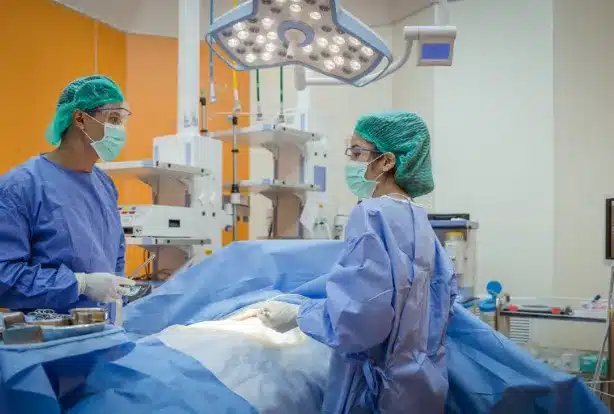Labiaplasty is a surgical procedure that involves altering the size or shape of the labia minora or majora, which are the folds of skin surrounding the vaginal opening. It is performed to address various concerns, including discomfort, aesthetic dissatisfaction, and functional limitations.
The decision to undergo labiaplasty is highly personal and should be made after careful consideration and consultation with a qualified healthcare professional.
Different Types of Labiaplasty
Labiaplasty refers to surgical procedures that involve altering the size or shape of the labia minora (inner vaginal lips) or labia majora (outer vaginal lips) for aesthetic or functional reasons. There are several types of labiaplasty techniques commonly performed:
Trim Labiaplasty (Edge Trim)
This technique involves trimming the excess tissue along the edge of the labia minora to achieve a more symmetrical and streamlined appearance. It is suitable for reducing elongated or uneven labial edges.
Indications
Suitable for reducing elongated or uneven labial edges.
Advantages
Provides a straightforward approach with predictable outcomes and minimal alteration of the natural labial contour.
Wedge Labiaplasty (V-Wedge Resection)
In wedge labiaplasty, a V-shaped wedge of tissue is excised from the middle portion of the labia minora, preserving the natural labial edge. This technique maintains the natural contour and reduces the risk of visible scars.
Clitoral Hood Reduction
Clitoral hood reduction aims to reduce excess tissue around the clitoris, enhancing clitoral exposure and improving aesthetic appearance. It can be performed as part of a labiaplasty procedure for comprehensive genital rejuvenation.
Reduction of Labia Majora (Mayoralty)
Labia majora reduction involves reducing the size or volume of the outer vaginal lips (labia majora) to achieve a more youthful and proportionate appearance. This procedure is often combined with labiaplasty for overall vaginal rejuvenation.
Indications
Suitable for patients with enlarged or asymmetrical labia majora seeking cosmetic improvement.

Advantages
Enhances overall vaginal aesthetics and symmetry.
Combination Techniques
Some patients may benefit from a combination of different labiaplasty techniques based on individual anatomy and aesthetic goals. Surgeons tailor the procedure to address specific concerns and achieve desired outcomes.
5 Tips about Labiaplasty
Before considering labiaplasty, keep the following tips in mind:
- Seek a Skilled and Qualified Surgeon
- Understand the Procedure and Recovery
- Realistic Expectations
- Consider non-surgical Alternatives.
- Follow Post-operative Care Guidelines
Benefits of Labiaplasty
This surgery can offer several benefits to individuals who choose to undergo the procedure:
- Enhanced Comfort: this surgery can alleviate discomfort caused by enlarged or elongated labia, improving overall comfort during physical activities, such as exercising or wearing certain clothing.
- Improved Aesthetics: Many individuals seek this surgery to enhance the appearance of their genital area. The procedure can address concerns about asymmetry, irregularities, or excessive tissue, helping individuals feel more confident and satisfied with their bodies.
- Increased Self-Confidence: Correcting aesthetic or functional issues through this surgery can improve self-esteem and body image, allowing individuals to feel more comfortable and confident in intimate relationships.
Side Effects of Labiaplasty
While this surgery is generally safe, it carries potential side effects and risks like any surgical procedure. Some possible side effects include:
- Temporary Discomfort: Mild to moderate discomfort or pain can be expected during the initial stages of recovery. This can usually be managed with prescribed pain medication.
- Swelling and Bruising: Swelling and bruising in the surgical area are common and typically subside within a few weeks. Applying ice packs and keeping the area elevated can help minimize these effects.
It’s important to note that these side effects are temporary and subside as the healing progresses.
Who Can Get Labiaplasty
this surgery is a personal choice that should be made by individuals who have concerns about the appearance or function of their labia. Candidates for this surgery may include those who:
- Experience discomfort or pain due to elongated or hypertrophic labia.
- Desire to improve the aesthetic appearance of their genital area.
The decision to undergo this surgery should be made after a thorough consultation with a qualified healthcare professional who can assess individual circumstances and provide appropriate guidance.
Additionally, exercising, including jogging or riding a bicycle, and other daily activities can be unpleasant as the exposed tissue is twisted, chafed, and pinched. Labiaplasty will remove the excess tissue and allow you to enjoy daily activities. North Raleigh

How Labiaplasty is Performed: Step-by-Step
This surgery is typically performed as an outpatient procedure under local anesthesia with sedation or general anesthesia. The specific steps may vary depending on the surgeon’s technique and the individual’s unique needs, but the general procedure includes the following steps:
- Anesthesia: The patient is comfortable using local anesthesia with sedation or general anesthesia, ensuring a pain-free experience throughout the surgery.
- Incision: The surgeon carefully makes incisions along the predetermined areas of the labia minora or majora, guided by the agreed-upon surgical plan.
- Reshaping and Reduction: Excess tissue is removed, and the remaining labial edges are reshaped to achieve the desired size, symmetry, and contour. The surgeon takes care to preserve natural-looking results.
- Suturing: The incisions are closed using dissolvable sutures, eliminating the need for suture removal later.
- Wound Care: The surgical area is cleaned, and a sterile dressing or ointment is applied to promote healing and protect the incisions.
- Recovery and Follow-up: After a brief observation period, the patient can return home on the same day. Post-operative instructions are provided, and follow-up appointments are scheduled to monitor progress and address concerns.
It is crucial to note that the specifics of the procedure may vary based on the surgeon’s technique and the individual’s unique anatomical considerations. A detailed discussion with the surgeon will provide a comprehensive understanding of the procedure.
Summary
Labiaplasty is a surgical procedure that allows individuals to address concerns related to the size, shape, or symmetry of their labia. It can improve comfort, enhance aesthetic appearance, and boost self-confidence.
By considering the different types of this surgery, following essential tips, understanding the benefits and potential side effects, and consulting with a qualified healthcare professional, individuals can make informed decisions about whether this surgery is the right choice. The step-by-step procedure ensures that the surgery is performed safely and with attention to the individual’s goals and needs.

Fun fact: Did you know that Labiaplasty Surgery is one of the most sought-after procedures in Cosmetic Gynecology? Labiaplasty, also known as Labia Reduction, is a surgical procedure that aims to enhance the appearance of the labia by reducing its size or altering its shape.
Not only is this procedure commonly pursued by those who wish to improve their self-esteem, but it’s also a part of the larger field of Vaginal Rejuvenation, which addresses various aesthetic and functional concerns. Aesthetic Surgery is not limited to just facial procedures; it encompasses a wide range of treatments to help individuals achieve Body Confidence.
So, if you’re considering any cosmetic procedure, remember that you’re not alone in your quest for self-confidence, and the options available are broader than ever!
FAQs
- Does insurance cover labiaplasty? Labiaplasty is usually not covered by insurance unless functional concerns are causing significant discomfort.
- What is the recovery time for labiaplasty? Recovery time varies but expects 2 to 4 weeks before resuming regular activities.
3. What does the labiaplasty procedure involve? During labiaplasty, the surgeon trims and reshapes the labial tissue to achieve the desired size and appearance. The procedure can be performed under local anesthesia with sedation or general anesthesia.
4. Is labiaplasty a painful procedure? Most patients experience mild discomfort and swelling after labiaplasty, which can be managed with pain medications prescribed by the surgeon. Proper post-operative care helps minimize discomfort during recovery.
5. How long does it take to recover from labiaplasty? Recovery time varies but typically involves several days to a week of downtime. Patients are advised to avoid strenuous activities and sexual intercourse during the initial healing period.
Raleigh Plastic Surgeon | North Raleigh Plastic Surgery



